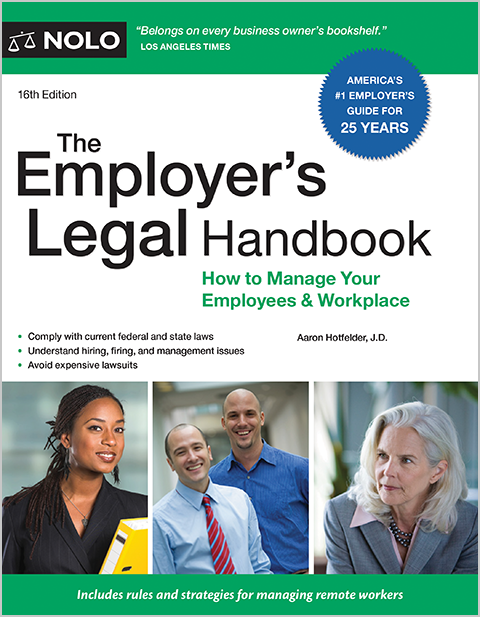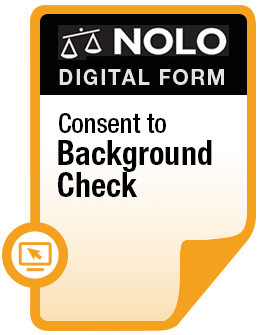Learn what sexual harassment is -- and how to prevent it.
As an employer, you have a responsibility to maintain a workplace that is free of sexual harassment. This is your legal obligation, but it also makes good business sense. If you allow sexual harassment to flourish in your workplace, you will pay a high price in poor employee morale, low productivity, and lawsuits.
The same laws that prohibit gender discrimination prohibit sexual harassment. Title VII of the Civil Rights Act is the main federal law that prohibits sexual harassment. (For more information on Title VII, see Nolo's article Federal Antidiscrimination Laws.) In addition, each state has its own anti-sexual harassment law.
This article explains what sexual harassment is and provides some prevention strategies.
What Is Sexual Harassment?
Sexual harassment is any unwelcome sexual advance or conduct on the job that creates an intimidating, hostile, or offensive working environment. Any conduct of a sexual nature that makes an employee uncomfortable has the potential to be sexual harassment.
Given this broad definition, it is not surprising that sexual harassment comes in many forms. The following are all examples of sexual harassment:
- A supervisor implies to an employee that the employee must sleep with him to keep a job.
- A sales clerk makes demeaning comments about female customers to his coworkers.
- An office manager in a law firm is made uncomfortable by lawyers who regularly tell sexually explicit jokes.
- A cashier at a store pinches and fondles a coworker against her will.
- A secretary's coworkers belittle her and refer to her by sexist or demeaning terms.
- Several employees post sexually explicit jokes on an office intranet bulletin board.
- An employee sends emails to coworkers that contain sexually explicit language and jokes.
The harasser can be the victim's supervisor, manager, or coworker. An employer may even be liable for harassment by a nonemployee (such as a vendor or customer), depending on the circumstances.
Anyone Can Be Sexually Harassed
Sexual harassment is a gender-neutral offense, at least in theory: Men can sexually harass women, and women can sexually harass men. However, statistics show that the overwhelming majority of sexual harassment claims and charges are brought by women claiming that they were sexually harassed by men.
People of the same sex can also sexually harass each other, as long as the harassment is based on sex rather than sexual orientation, which is not a protected characteristic under Title VII. For example, if a man's coworkers constantly bombard him with sexually explicit photos of women, and this makes him uncomfortable, he might have a sexual harassment claim. If, however, a man's coworkers tease and belittle him because he is gay, that might not be illegal harassment under federal law as it is currently interpreted. However, such conduct may be illegal under laws enacted by certain states, or even cities. (Of course, even if this type of behavior isn't illegal, it also isn't appropriate, and savvy employers will put a stop to it promptly so everyone can get back to work.)
The line between harassment based on sex and harassment based on sexual orientation becomes blurred when gender-based stereotypes are at play. For example, courts have held that Title VII is violated when a woman is harassed and discriminated against because she does not act sufficiently feminine; similarly, a man who is harassed for having effeminate mannerisms and gestures is protected by Title VII. These same employees might not be protected if their harassers relied more explicitly on homophobic slurs and remarks. Again, however, smart employers won't parse the legal details: This type of behavior detracts from productivity and morale and doesn't serve any valid purpose, so there's no reason to allow it to continue.
Strategies for Prevention of Sexual Harassment
There are a number of steps that you can take to reduce the risk of sexual harassment occurring in your workplace. Although you may not be able to take all of the steps listed below, you should take as many of them as you can.
- Adopt a clear sexual harassment policy. In your employee handbook, you should have a policy devoted to sexual harassment. That policy should:
- define sexual harassment
- state in no uncertain terms that you will not tolerate sexual harassment
- state that you will discipline or fire any wrongdoers
- set out a clear procedure for filing sexual harassment complaints
- state that you will investigate fully any complaint that you receive, and
- state that you will not tolerate retaliation against anyone who complains about sexual harassment.
- Train employees. At least once a year, conduct training sessions for employees. These sessions should teach employees what sexual harassment is, explain that employees have a right to a workplace free of sexual harassment, review your complaint procedure, and encourage employees to use it.
- Train supervisors and managers. At least once a year, conduct training sessions for supervisors and managers that are separate from the employee sessions. The sessions should educate the managers and supervisors about sexual harassment and explain how to deal with complaints. To learn more about dealing with employee complaints, see Nolo's article Guidelines for Handling Discrimination and Harassment Complaints.
- Monitor your workplace. Get out among your employees periodically. Talk to them about the work environment. Ask for their input. Look around the workplace itself. Do you see any offensive posters or notes? Talk to your supervisors and managers about what is going on. Keep the lines of communication open.
- Take all complaints seriously. If someone complains about sexual harassment, act immediately to investigate the complaint. If the complaint turns out to be valid, your response should be swift and effective.
Sexual Harassment Training Requirements
Some states require certain employers to conduct sexual harassment training. For example, California law requires employers that have at least 50 employees to provide supervisors with two hours of interactive sexual harassment training every two years. Connecticut and Maine also require sexual harassment training.
And other states strongly encourage employers to provide such training, even if it isn't legally required. Even if your state doesn't require or suggest training, it's still a good idea -- your managers will know what the law is and what to do when employees complain, and, if you find yourself in a lawsuit, you'll be able to show that you took steps to try to prevent harassment.



